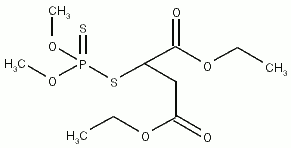Malathion
|
|
Malathion is an insecticide of relatively low human toxicity.
In 1976, numerous malaria workers in Pakistan were poisoned by isomalathion, a common impurity in malathion, which is capable of inhibiting carboxyesterase enzymes in those exposed to it; the original toxicity evaluation for malathion had not anticipated isomalathion coexposure.
Clinical uses
Malathion is used as a treatment for head lice and body lice. It effectively kills both the eggs and the adult lice.
Instances of Use
Malathion was sprayed in many cities to combat West Nile virus. In the Fall of 1999 and the Spring of 2000, Long Island and the five boroughs of New York City were sprayed with Malathion. Use of the insecticide has been blamed for large lobster die-off in Long Island Sound. [1] (http://www.seagrant.sunysb.edu/LILobsters/Oct04Meeting/summaries/LISLISummary-Pesticides.pdf)
Sources
- Brenner, G. M. (2000). Pharmacology. Philadelphia, PA: W.B. Saunders Company. ISBN 0-7216-7757-6
- Klaassen, C. D. (2001). Casarett & Doull's Toxicology McGraw-Hill Medical. ISBN 0-0713-4721-6

